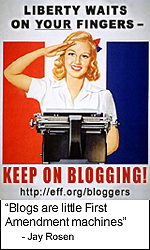1980-89---Solidarity, a non-communist-controlled trade union, gains strength in Poland, elects Lech Walesa president and pushes for free elections.
Spring 1989—The world holds its collective breath as it watches students defy tanks in Tiananmen Square. A sprit of revolt against repression is in the air.
At the same time, Protestant churches throughout East Germany use weekly prayer meetings to press for change, and prepare for peaceful demonstrations that could be mobilized quickly, when circumstances allowed. By October, they were ready. Some say the Lutheran church was East Germany’s Solidarity Party. For more on this topic, see http://www.timesonline.co.uk/tol/comment/faith/article6906779.ece
August 19, 1989---A young Hungarian border guard defies orders and allows a group of East German tourists to cross into Austria.
See http://www.expatica.com/de/life-in-germany/news_focus/Looking-back_-Remember-the-fall-of-the-Berlin-Wall_14767.html for a recent interview with that courageous guard.
Late August, 1989--- A Solidarity-led coalition government is elected in Poland.
September, 1989—Thousands more East Germans flee to Austria, by way of Hungary. Fearing mass defection, East German authorities demand their citizens return to Budapest, then to East Germany, immediately. Instead, thousands flood the West German embassy in Austria, seeking asylum.
East Germany quickly stops travel to Hungary, ordering tourists already there to return home. East Germans visiting Czechoslavakia are told to return home, as well. Many refuse.
Mass demonstrations erupt across East Germany.
October 18---Erich Honecker resigns as chancellor of East Germany. Protests grow louder and larger.
West Germany accepts those seeking asylum. Thousands more stream through Czechoslovakia, hoping to get to the West.
The Czech government does not force East Germans to return. Chaos erupts all over Eastern Europe.
November 4—A million people gather in East Berlin’s Alexanderplatz chanting “Wir wollen raus!” or “We want out!”
November 9----Hoping to stem some of the unrest, the newly appointed East German leader agrees to loosen travel restrictions, including travel between East and West Berlin, beginning November 17. He directs Party Secretary for Propaganda Günter Schabowski to make the announcement.
Click on Read More to see what happened next, according to New York Times reporter Alison Smale, who was in East Berlin on that historic day:
Then, in early evening, Günter Schabowski, a Communist party leader, startled everyone by announcing at a televised news conference that travel restrictions would be loosened and a simple visa procedure introduced to allow East Germans to visit the West. Asked when, he (poorly briefed, as we now know) fumbled: “Immediately.”
Within minutes, I was racing with a colleague and the East German state news agency’s speedily produced report on the news conference to a subway station in the city center.
We spread the word — some people were ecstatic, others skeptical, demanding to see the agency report. Only a few hundred East Berliners had enough faith in the words of a long-despised party leadership to go straight to the wall and see if they could cross this forbidding structure — actually two walls, separated by a no man’s land of mines and barbed wire. But, as the hours ticked by, and West German television, a trusted source, reported that some people were managing to cross into West Berlin and West Germany, more and more went to try.
I arrived at Checkpoint Charlie — the scene of Cold War legend, where East and West swapped spies and secrets — with the first of about 300 East Germans propelled there by word from West German television. Nothing was happening. The crowd waved to a handful of West Berliners gathered about 50 meters away, or 160 feet, on the other side and said they would be across soon.
The border guards, bereft of instruction from the command system that had trained them to defend this barrier with their lives, plainly did not know what to do. Some stood silent, others engaged in conversation with the crowd; what they did not do was what they ordinarily would have done: Drive them away.
See http://www.nytimes.com/2009/11/07/weekinreview/07iht-berlinwall.html?_r=1&hp for Smale’s entire story.
Here's another reporter's account:
Everyone felt that something was going to happen, but the question was what? Nobody dreamt that the Berlin Wall would suddenly open, let alone that Germany would be reunited within a year. With hindsight, the assumption seems almost idiotic, but the widely held expectation was that East Germany would attempt to reform itself from within.
What confronted us at the Bornholmer bridge was beyond belief: a vast tide of people, some in tears, many just looking stunned, flooding across. Behind them were the huge glaring arc lights, guard huts, raised barriers and a line of puffing Trabant and Wartburg cars. Two East German border guards stood there looking bewildered. One, I remember, was crying. With no orders from above, the guards had simply buckled under the pressure of a 20,000 strong crowd of East Berliners chanting "Open the gate!" and raised the barriers.
Read the entire story at http://www.independent.co.uk/news/world/europe/a-bridge-opened-ndash-and-then-the-wall-fell-1817277.html
The video below (and in the introduction) was shot at the Bornholmer Bridge. It's from Spiegel TV, audio is in German with English subtitles. It's raw, long (9 1/2 minutes), but absolutely riveting footage. If it takes too long to download on your computer, you can watch it more easily on YouTube at:
http://www.youtube.com/watch?v=1_eCVhCGYwE
http://topics.nytimes.com/topics/reference/timestopics/subjects/b/berlin_wall/index.html
Also, a website for ex-pats has a similar package at
http://www.expatica.com/de/life-in-germany/news_focus/Looking-back_-Remember-the-fall-of-the-Berlin-Wall_14767.html










